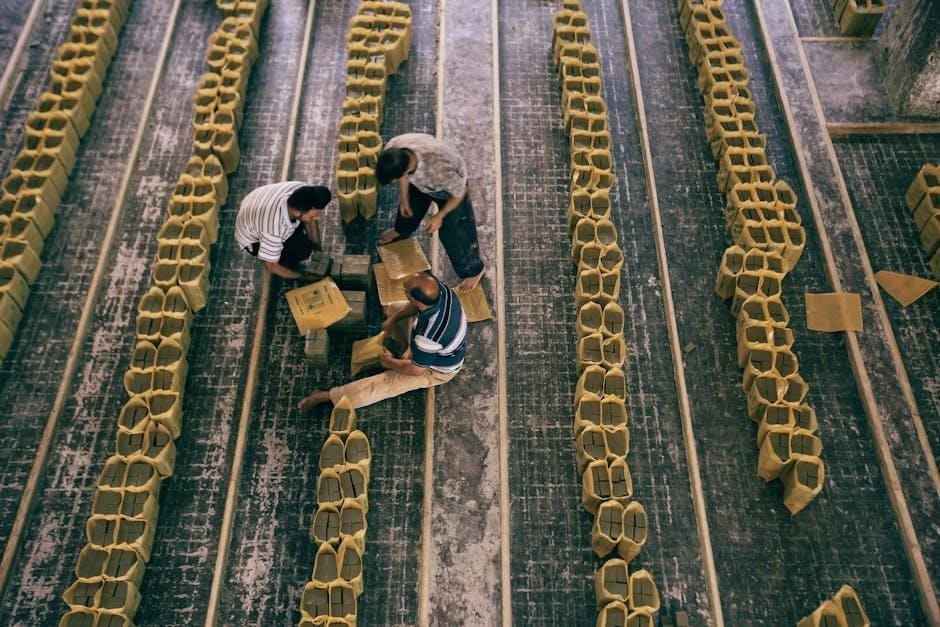What Does TILE Stand For in Manual Handling?
TILE is an acronym representing key factors in manual handling risk assessments. It stands for Task, Individual, Load, and Environment, providing a structured approach to evaluate and mitigate risks associated with manual handling tasks.
TILE is a widely recognized acronym used to guide manual handling risk assessments in workplaces. It stands for Task, Individual, Load, and Environment, providing a structured framework to evaluate and mitigate risks associated with manual handling activities. The TILE acronym serves as a memorable tool to ensure that all critical factors are considered when assessing the safety of a task. By breaking down the assessment into these four key components, employers and employees can systematically identify potential hazards and implement controls to reduce the risk of injury. This approach is essential for promoting a safer working environment and ensuring compliance with health and safety regulations. The TILE method is particularly valued for its simplicity and effectiveness in addressing the complexities of manual handling tasks. It emphasizes the importance of a holistic evaluation, considering both the physical demands of the task and the individual capabilities of the person performing it. This comprehensive approach helps organizations create a safer and more efficient workplace.
Task: Understanding the Nature of the Manual Handling Activity
The Task component of the TILE acronym focuses on understanding the specific requirements and demands of the manual handling activity. This involves analyzing the actions, movements, and forces involved in the task, such as lifting, carrying, pushing, or pulling. Assessing the task helps identify potential risks, including repetitive movements, awkward postures, and the need for precise control. For example, tasks that require frequent bending or reaching may pose a higher risk of injury. Employers should evaluate whether the task can be modified or automated to reduce physical demands. Additionally, the frequency and duration of the task are critical factors, as prolonged or repetitive activities can lead to fatigue and strain. By thoroughly understanding the nature of the task, employers and employees can take proactive steps to minimize risks and ensure a safer working environment. This assessment is the foundation of the TILE framework, setting the stage for evaluating individual capabilities, load characteristics, and environmental factors.
Individual: Assessing the Capabilities and Limitations of the Person
The Individual aspect of the TILE framework focuses on evaluating the personal capabilities and limitations of the person performing the manual handling task. This includes assessing physical strength, endurance, and overall health to determine if they are suited for the task. Factors such as body size, flexibility, and previous injuries or medical conditions are also considered. For instance, an individual with a back injury may need specific accommodations or restrictions to prevent further harm. Employers should provide training to ensure workers understand proper lifting techniques and are aware of their own physical limitations. Additionally, personal protective equipment (PPE) may be necessary to support the individual during the task. Regular health assessments and ergonomic adjustments can further mitigate risks. By understanding the individual’s capabilities, employers can assign tasks appropriately and implement safeguards to prevent injuries. This step ensures that the person is physically and mentally prepared for the demands of the manual handling activity.
Load: Evaluating the Characteristics of the Object Being Handled
The Load component of the TILE framework involves assessing the physical characteristics of the object being handled. This includes evaluating its weight, size, shape, and stability. Understanding these factors helps determine the level of difficulty and potential risks associated with moving the object. For instance, an uneven or unstable load can increase the likelihood of accidents, while a heavy or bulky object may require additional support or equipment. The material of the load is also important, as slippery or sharp surfaces can pose hazards. Furthermore, the load’s center of gravity plays a crucial role in maintaining balance during lifting or moving. Assessing the load’s characteristics ensures that appropriate handling techniques and tools are selected to minimize risks. This step is critical in preventing injuries and ensuring that the manual handling task is carried out safely and efficiently. By evaluating the load, employers and employees can implement measures to handle objects securely, reducing the risk of accidents in the workplace.
Environment: Analyzing the Surroundings and Conditions
The Environment aspect of the TILE framework focuses on evaluating the surroundings and conditions where the manual handling task takes place. This includes assessing the workspace layout, floor conditions, lighting, temperature, and any obstacles or hazards present. The environment plays a critical role in determining the safety of the task, as poorly designed workspaces or adverse conditions can significantly increase the risk of injury. For example, uneven or slippery floors can lead to slips or trips, while inadequate lighting may make it difficult to see the load or surrounding hazards. Additionally, the presence of obstacles or confined spaces can complicate the handling process, requiring alternative strategies or equipment. Understanding the environmental factors ensures that adjustments can be made to minimize risks, such as clearing the area, improving lighting, or using assistive devices. A safe environment is essential for protecting both the individual and the load during manual handling operations. By addressing environmental challenges, employers can create a safer workplace and reduce the likelihood of accidents.

Importance of TILE in Workplace Safety
TILE is crucial for workplace safety as it systematically identifies and mitigates manual handling risks. By focusing on Task, Individual, Load, and Environment, it ensures a safer working environment, reducing injuries and enhancing overall safety standards.
How TILE Helps Prevent Manual Handling Injuries

TILE plays a significant role in preventing manual handling injuries by providing a structured approach to risk assessment. By analyzing the Task, Individual, Load, and Environment, employers and employees can identify potential hazards early. This systematic evaluation allows for the implementation of targeted safety measures, such as adjusting work practices, providing personal protective equipment, or modifying the workspace. For instance, understanding the physical demands of a task helps in assigning suitable personnel, while assessing the load’s characteristics ensures it is within safe lifting limits. Additionally, evaluating the environment helps in eliminating obstacles or improving lighting, reducing the likelihood of accidents. TILE’s holistic approach ensures that all factors contributing to manual handling risks are addressed, thereby creating a safer and healthier work environment; Regular application of the TILE framework fosters a culture of safety, leading to fewer injuries and improved workplace efficiency.

Steps to Conduct a TILE Assessment
Conducting a TILE assessment involves evaluating the Task, Individual, Load, and Environment. Assess each component systematically to identify risks, implement safety measures, and ensure safe manual handling practices are followed.
Practical Application of TILE in Manual Handling Risk Assessment
The TILE acronym provides a straightforward framework for conducting manual handling risk assessments. By breaking down the process into four key components—Task, Individual, Load, and Environment—employers and employees can systematically identify and mitigate risks.
- Task: Analyze the specific manual handling activity, including the frequency, duration, and posture required. Consider whether the task can be modified to reduce strain.
- Individual: Assess the physical capabilities and limitations of the person performing the task, such as strength, fitness level, and any pre-existing conditions.
- Load: Evaluate the weight, size, and stability of the object being handled. Determine if the load can be divided or adjusted to make it easier to manage.
- Environment: Examine the workplace surroundings, including floor conditions, lighting, and obstacles that could hinder safe manual handling.

By applying the TILE method, organizations can create safer working conditions, reduce the likelihood of injuries, and promote a culture of safety and efficiency in manual handling tasks.
TILE plays a pivotal role in promoting safe manual handling practices by providing a clear and structured approach to risk assessment. By focusing on Task, Individual, Load, and Environment, the TILE framework ensures that all critical factors are considered, minimizing the risk of injuries and enhancing workplace safety. This method not only aids employers in complying with safety regulations but also empowers employees to perform their tasks more safely and efficiently. The simplicity and effectiveness of TILE make it an essential tool in creating a safer work environment, reducing the likelihood of manual handling-related injuries, and fostering a culture of proactive risk management. Ultimately, the widespread adoption of TILE contributes significantly to overall workplace well-being and productivity.

